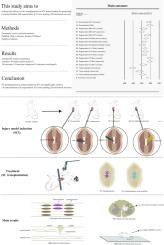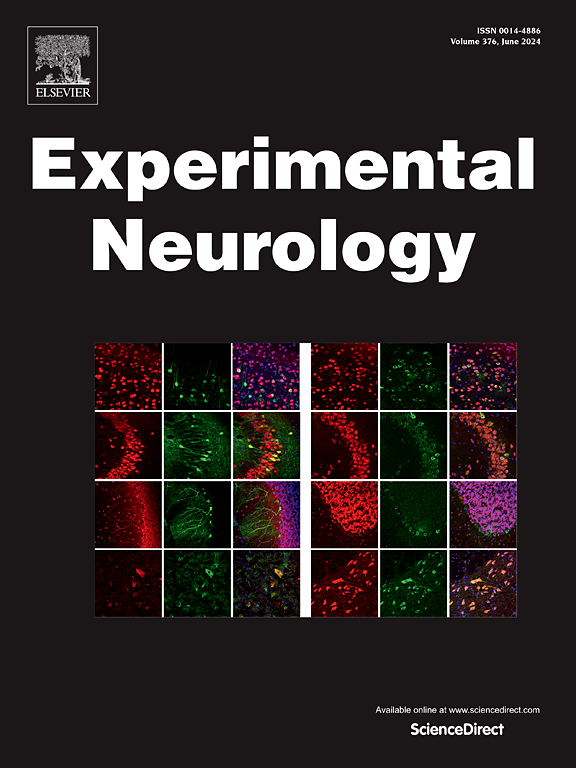Schwann cell transplantation for remyelination, regeneration, tissue sparing, and functional recovery in spinal cord injury: A systematic review and meta-analysis of animal studies
IF 4.6
2区 医学
Q1 NEUROSCIENCES
引用次数: 0
Abstract
Introduction
Spinal cord injury (SCI) is a significant global health challenge that results in profound physical and neurological impairments. Despite progress in medical care, the treatment options for SCI are still restricted and often focus on symptom management rather than promoting neural repair and functional recovery. This study focused on clarifying the impact of Schwann cell (SC) transplantation on the molecular, cellular, and functional basis of recovery in animal models of SCI.
Material and methods
Relevant studies were identified by conducting searches across multiple databases, which included PubMed, Web of Science, Scopus, and ProQuest. The data were analyzed via comprehensive meta-analysis software. We assessed the risk of bias via the SYRCLE method.
Results
The analysis included 59 studies, 48 of which provided quantitative data. The results revealed significant improvements in various outcome variables, including protein zero structures (SMD = 1.66, 95 %CI: 0.96–2.36; p < 0.001; I2 = 49.8 %), peripherally myelinated axons (SMD = 1.81, 95 %CI: 0.99–2.63; p < 0.001; I2 = 39.3 %), biotinylated dextran amine-labeled CST only rostral (SMD = 1.31, 95 % CI: 0.50–2.12, p < 0.01, I2 = 49.7 %), fast blue-labeled reticular formation (SMD = 0.96, 95 %CI: 0.43–1.49, p < 0.001, I2 = 0.0 %), 5-hydroxytryptamine caudally (SMD = 0.83, 95 %CI: 0.36–1.29, p < 0.001, I2 = 17.2 %) and epicenter (SMD = 0.85, 95 %CI: 0.17–1.53, p < 0.05, I2 = 62.7 %), tyrosine hydroxylase caudally (SMD = 1.86, 95 %CI: 1.14–2.59, p < 0.001, I2 = 0.0 %) and epicenter (SMD = 1.82, 95 %CI: 1.18–2.47, p < 0.001, I2 = 0.0 %), cavity volume (SMD = −2.07, 95 %CI: −2.90 - −1.24, p < 0.001, I2 = 67.2 %), and Basso, Beattie, and Bresnahan (SMD = 1.26, 95 %CI: 0.93–1.58; p < 0.001; I2 = 79.4 %).
Conclusions
This study demonstrates the promising potential of SC transplantation as a therapeutic approach for SCI, clarifying its impact on various biological processes critical for recovery.

许旺细胞移植用于脊髓损伤的再髓鞘化、再生、组织疏通和功能恢复:动物研究的系统回顾和荟萃分析。
导言:脊髓损伤(SCI)是全球性的重大健康挑战,会导致严重的身体和神经损伤。尽管医疗保健取得了进步,但脊髓损伤的治疗方案仍然有限,而且往往侧重于症状控制,而不是促进神经修复和功能恢复。本研究的重点是阐明许旺细胞(SC)移植对 SCI 动物模型恢复的分子、细胞和功能基础的影响:通过对多个数据库(包括PubMed、Web of Science、Scopus和ProQuest)进行检索,确定了相关研究。数据通过综合荟萃分析软件进行分析。我们通过 SYRCLE 方法评估了偏倚风险:分析包括 59 项研究,其中 48 项提供了定量数据。结果显示,蛋白质零结构(SMD = 1.66,95 %CI:0.96-2.36;P 2 = 49.8 %)、外周髓鞘轴突(SMD = 1.81,95 %CI:0.99-2.63;P 2 = 39.3 %)、生物素化右旋糖酐胺标记的 CST 仅喙侧 (SMD = 1.31,95 %CI:0.50-2.12,p 2 = 49.7 %)、快速蓝标记的网状结构 (SMD = 0.96,95 %CI:0.43-1.49,p 2 = 0.0 %)、5-羟色胺尾侧 (SMD = 0.83, 95 %CI: 0.36-1.29, p 2 = 17.2 %)和震中(SMD = 0.85, 95 %CI: 0.17-1.53, p 2 = 62.7 %)、酪氨酸羟化酶尾部(SMD = 1.86, 95 %CI: 1.14-2.59, p 2 = 0.0 %)和震中(SMD = 1.82,95 %CI:1.18-2.47,p 2 = 0.0 %)、空腔容积(SMD = -2.07,95 %CI:-2.90-1.24,p 2 = 67.2 %)以及巴索、比提和布雷斯纳汉(SMD = 1.26,95 %CI:0.93-1.58;p 2 = 79.4 %):本研究证明了SC移植作为SCI治疗方法的巨大潜力,阐明了SC移植对各种对康复至关重要的生物过程的影响。
本文章由计算机程序翻译,如有差异,请以英文原文为准。
求助全文
约1分钟内获得全文
求助全文
来源期刊

Experimental Neurology
医学-神经科学
CiteScore
10.10
自引率
3.80%
发文量
258
审稿时长
42 days
期刊介绍:
Experimental Neurology, a Journal of Neuroscience Research, publishes original research in neuroscience with a particular emphasis on novel findings in neural development, regeneration, plasticity and transplantation. The journal has focused on research concerning basic mechanisms underlying neurological disorders.
 求助内容:
求助内容: 应助结果提醒方式:
应助结果提醒方式:


